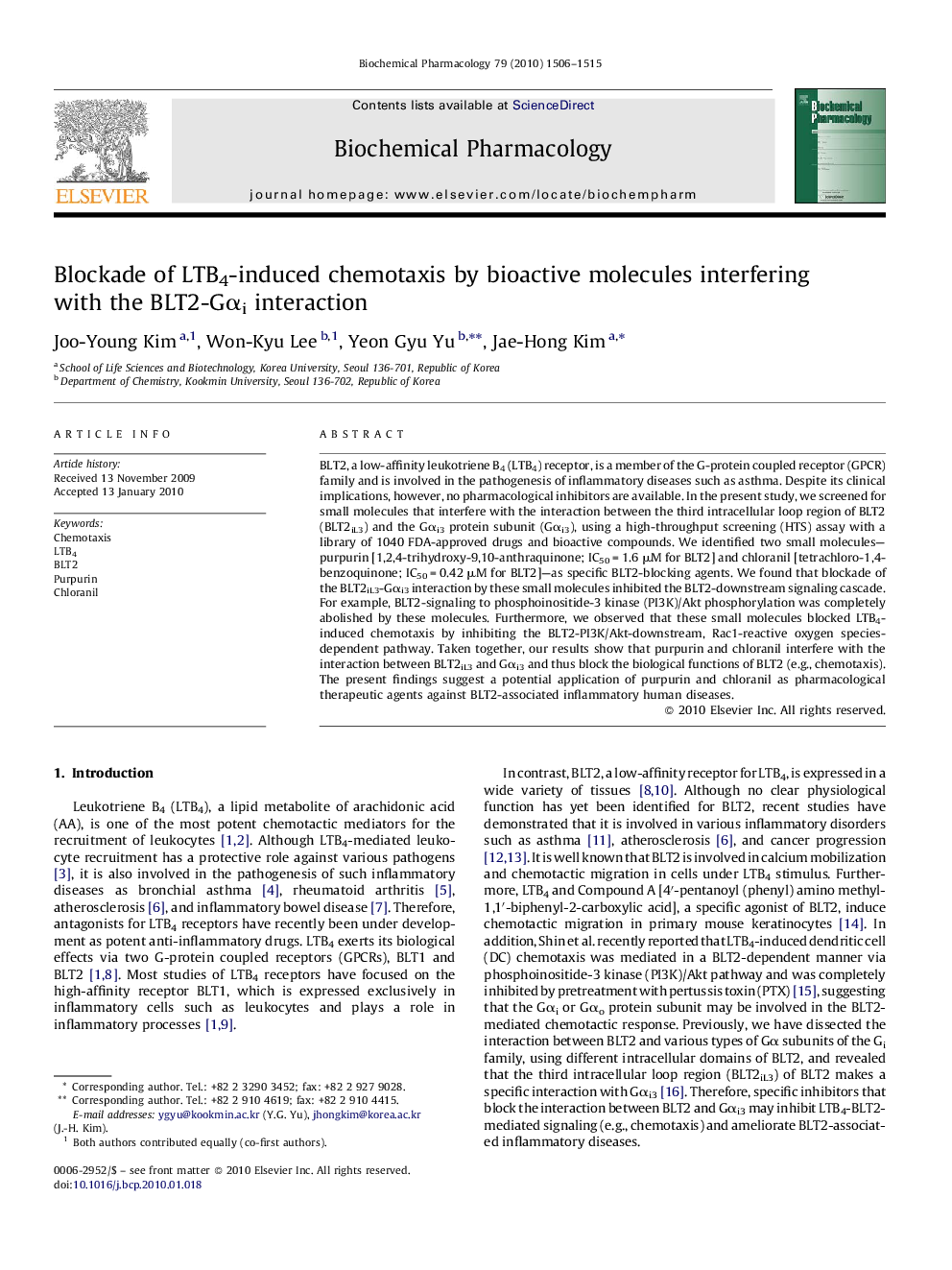| Article ID | Journal | Published Year | Pages | File Type |
|---|---|---|---|---|
| 2513656 | Biochemical Pharmacology | 2010 | 10 Pages |
BLT2, a low-affinity leukotriene B4 (LTB4) receptor, is a member of the G-protein coupled receptor (GPCR) family and is involved in the pathogenesis of inflammatory diseases such as asthma. Despite its clinical implications, however, no pharmacological inhibitors are available. In the present study, we screened for small molecules that interfere with the interaction between the third intracellular loop region of BLT2 (BLT2iL3) and the Gαi3 protein subunit (Gαi3), using a high-throughput screening (HTS) assay with a library of 1040 FDA-approved drugs and bioactive compounds. We identified two small molecules—purpurin [1,2,4-trihydroxy-9,10-anthraquinone; IC50 = 1.6 μM for BLT2] and chloranil [tetrachloro-1,4-benzoquinone; IC50 = 0.42 μM for BLT2]—as specific BLT2-blocking agents. We found that blockade of the BLT2iL3-Gαi3 interaction by these small molecules inhibited the BLT2-downstream signaling cascade. For example, BLT2-signaling to phosphoinositide-3 kinase (PI3K)/Akt phosphorylation was completely abolished by these molecules. Furthermore, we observed that these small molecules blocked LTB4-induced chemotaxis by inhibiting the BLT2-PI3K/Akt-downstream, Rac1-reactive oxygen species-dependent pathway. Taken together, our results show that purpurin and chloranil interfere with the interaction between BLT2iL3 and Gαi3 and thus block the biological functions of BLT2 (e.g., chemotaxis). The present findings suggest a potential application of purpurin and chloranil as pharmacological therapeutic agents against BLT2-associated inflammatory human diseases.
Graphical abstractFigure optionsDownload full-size imageDownload as PowerPoint slide
